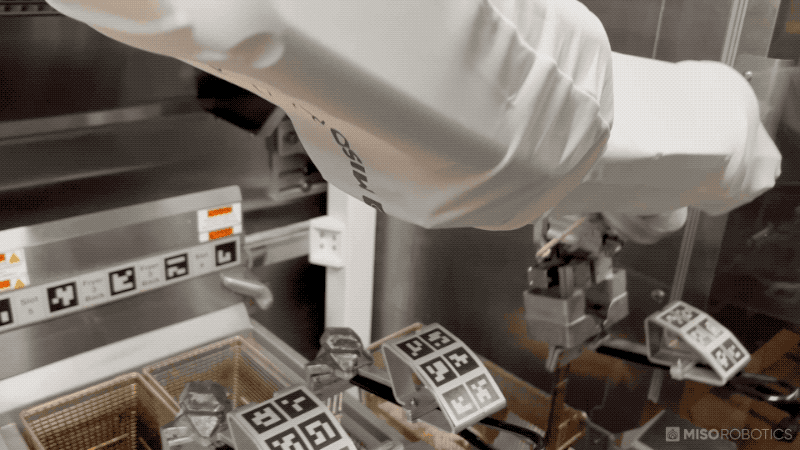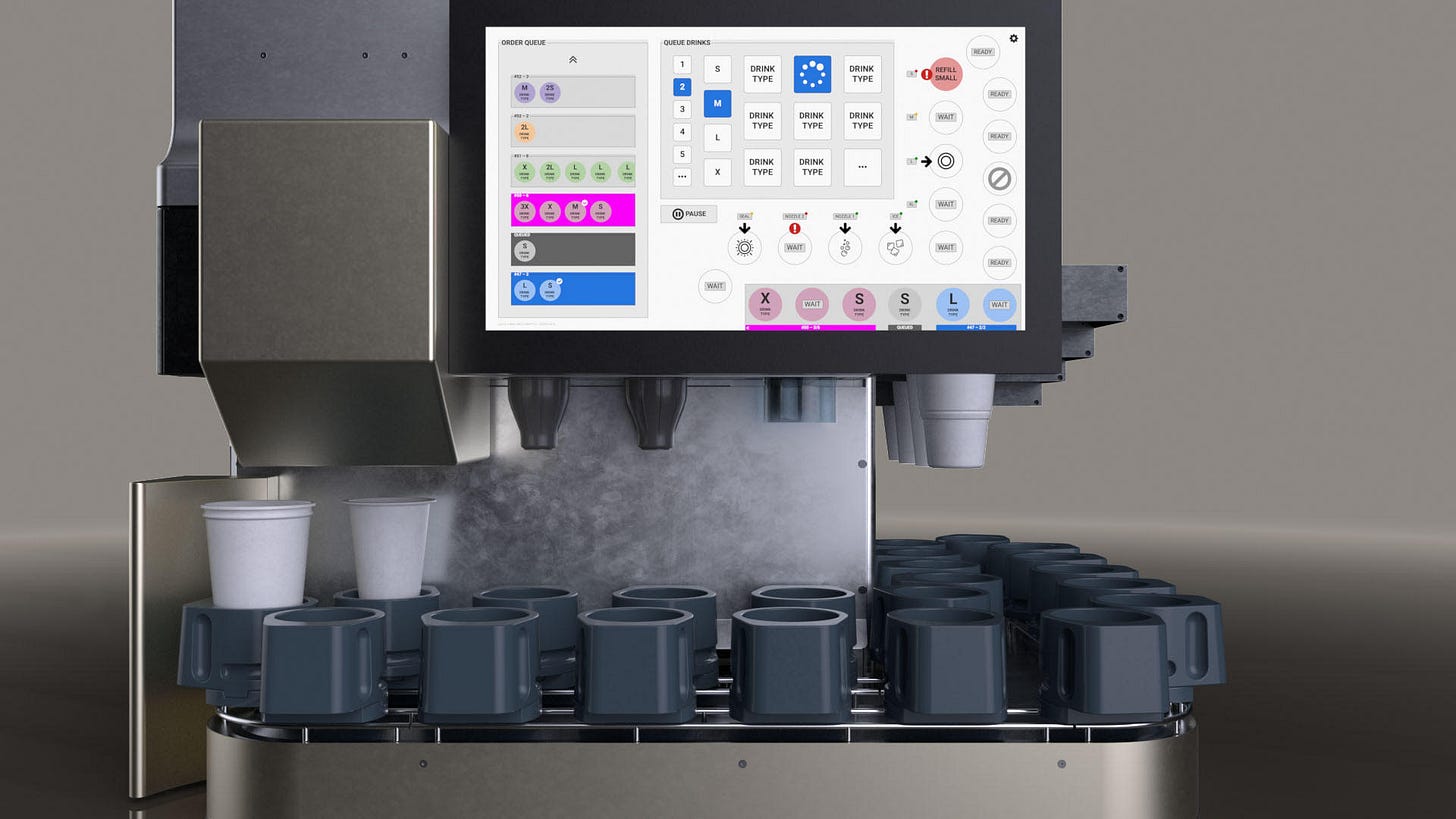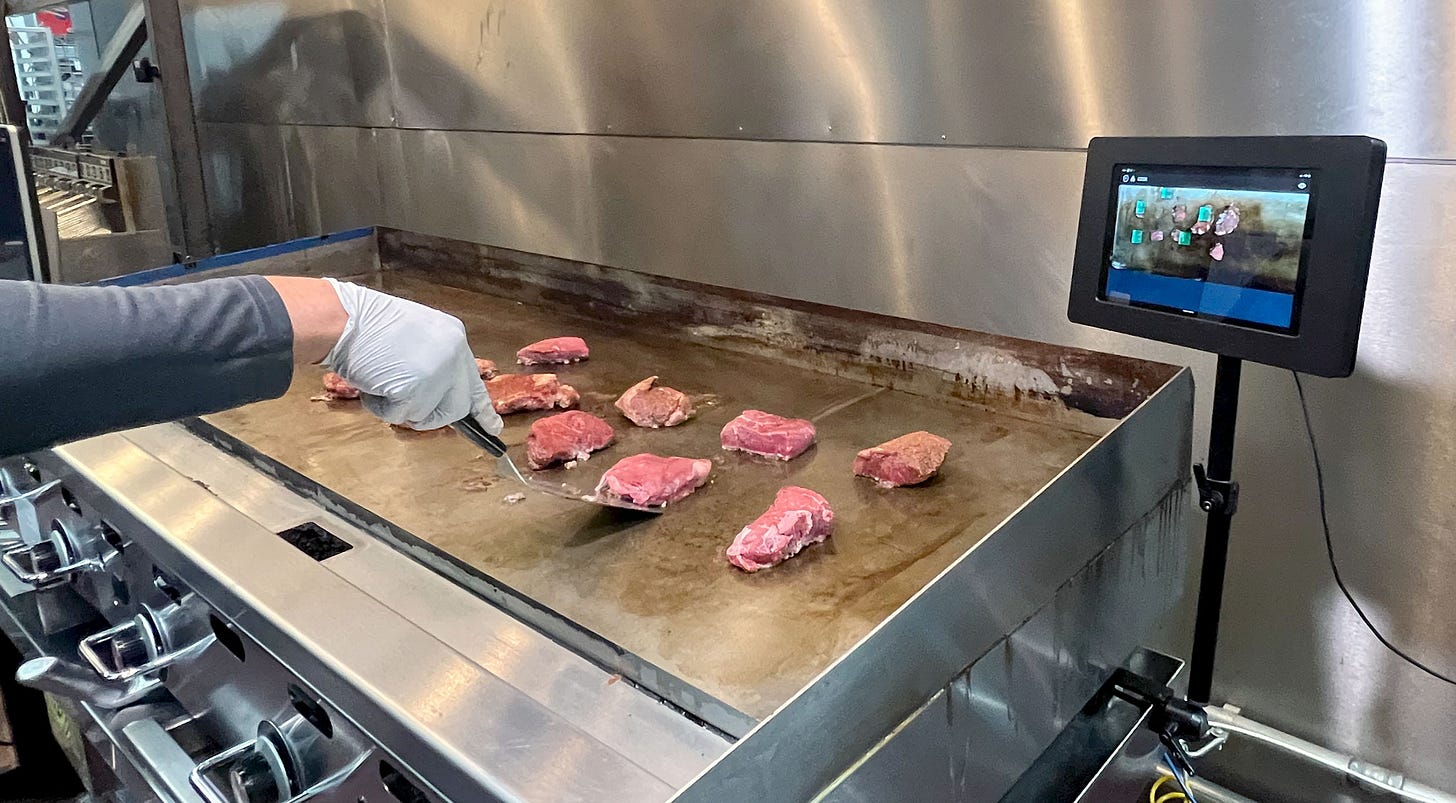Welcome to a new episode of Year 2049, your weekly guide to the events, discoveries, and innovations shaping the future of tech, climate, science, and more.
If this was forwarded to you, subscribe to get a new story in your inbox every Friday 👇
This week’s comic
The backstory
Miso Robotics wants to automate fast food

If you thought fast food was already fast enough, Miso Robotics thinks differently.
The startup, founded in 2016 in California, wants to bring automation to fast food restaurants. Miso’s first invention was Flippy, a burger-flipping robot, which made headlines in 2020 when White Castle introduced it in one of its Chicago locations (CNN).
The company recently announced Flippy 2 with more advanced features and faster processing times that can rival Spongebob’s burger-stacking abilities.
Miso Robotics, at a glance:
Partnerships: secured partnerships with some big brands in the US including White Castle and Inspire Brands, which owns Arby’s, Baskin-Robbins, Buffalo Wild Wing, and Dunkin’ Donuts.
Funding: raised a total of $40 million through equity crowdfunding, aka raising money from the public and not venture capital firms.
Business model: Miso doesn’t sell its robots or software, it charges restaurants a monthly fee to install and operate their automation solutions while getting 24/7 maintenance and live support. This model is called “Robots-as-a-Service” and the goal is to minimize upfront costs to restaurants and give them the flexibility to cancel at any time.
Miso’s automation roster
Since it was founded, Miso has developed three major products:
🍔 FLIPPY 2: The versatile kitchen assistant
Unlike what the name suggests, Flippy 2 can do more than just flip burgers.
What it can cook: burgers, chicken tenders, wings, fish fillets, french fries, onion rings, and any other fried comfort food your heart desires.
Cost: starts at $3,000/month
Features: Flippy 2 has automatic dispensers to cook high-volume foods like french fries. It also has AutoBins that can identify the type of food (like onion rings or chicken tenders) and cook it accordingly.
🥤 SIPPY: The automatic beverage dispenser
The picture doesn’t do this machine justice, so watch this 50-second video to see how Sippy works.
It automates the whole process of filling out everyone’s drinks as soon as orders are received: cups are dropped into the cup holders, the conveyor belt moves them around, they get filled, and then get sealed.
What it does: it links to a restaurant’s point of sale (POS) system and automates the whole process of filling out people’s drinks as orders are received.
Cost: TBD. Sippy is set to be released in 2022.
Features: accommodates different cup sizes, smartly groups cups by order, and precisely dispenses ice and liquids.
🤌 COOKRIGHT: AI-powered vision and sensor system for the grill
CookRight is a software system and not a robot.
It incorporates machine learning, sensors, and computer vision to help cooks while they’re grilling. CookRight is the same software that powers Flippy’s abilities, but is a cheaper alternative if restaurants can’t afford or don’t want the full robot.
What it can help cook: burgers, chicken, fish, steak, sausage, hot dogs
Cost: TBD. CookRight is set to be released in 2022.
Features: food recognition (with 96% accuracy), cook time tracking, alerts kitchen staff when flipping needs to occur or if cooking is done
The beauty of CookRight and its machine learning capabilities is that it can literally learn how to identify any item placed on a grill and know how long it needs to be cooked, moved or flipped in real-time.
– Buck Jordan, President and Chairman of Miso Robotics
Final thoughts
Miso Robotics’ tech is impressive and is targeted at the highly-repetitive tasks that fast food employees are currently responsible for. While these automation solutions are meant to assist humans and not replace them, some jobs will be at risk.
We’re still far from fully-autonomous kitchens that don’t need human employees but it’s important to identify these problems sooner rather than later. The nature and amount of jobs in the fast food industry are changing.
Some fast food restaurants want to upskill their employees to take on more important roles. Last week, Taco Bell announced it’s launching a business school (in partnership with the University of Louisville) to teach employees how to be franchise owners through a 6-week training program.
Some other restaurants will cut these jobs to save money and spare people from “undesirable” jobs that they don’t want. While that’s true to some extent, these jobs can be a temporary solution for people trying to make ends meet or those who need a part-time job while they’re in school. What makes these jobs really “undesirable” are the low wages and bad working conditions.
There’s a lot more I want to talk about but I’ll save that for a future edition where I’ll discuss the big “will there be enough jobs in the future?” question that worries us all.
Until then, leave a comment and let me know what your thoughts are.
Help me spread the word
Doing the research, drawing comics, and writing this newsletter has been an absolute joy for me every week.
The best way to support me is to invite others to subscribe to Year 2049.
⭐️ Share Year 2049 on:
or just send this link to them: https://year2049.substack.com/welcome
If you missed the previous episode
I talked about Ossiform’s promising 3D-printed bone implants. I reached out to Ossiform with some questions and they responded! Go check out the Q&A section I just added which will clarify some questions we had last week 👇
Vic and Tori made it on their Instagram and Linkedin pages which was the highlight of my week 🤩
Want more? Check out all previous Year 2049 episodes.
Thanks for reading
As always, thank you for taking time to read this and learn about the events, discoveries, and inventions shaping our future. See you again next week.
Much love,
Fawzi
How would you rate this week's edition?











I like that the robot is wearing a hair net 🤣
There is Flippy and Sippy. The fryer one should have been called Dippy.